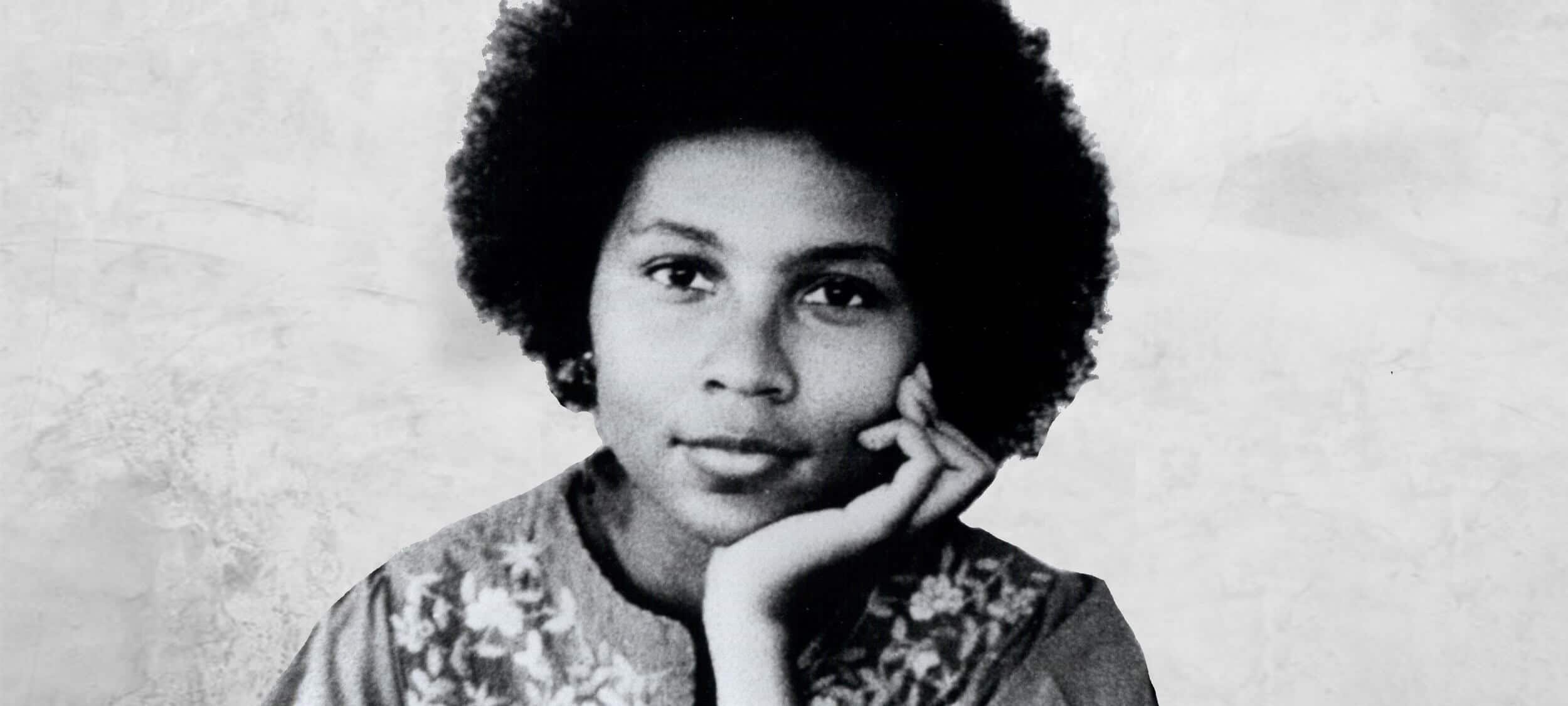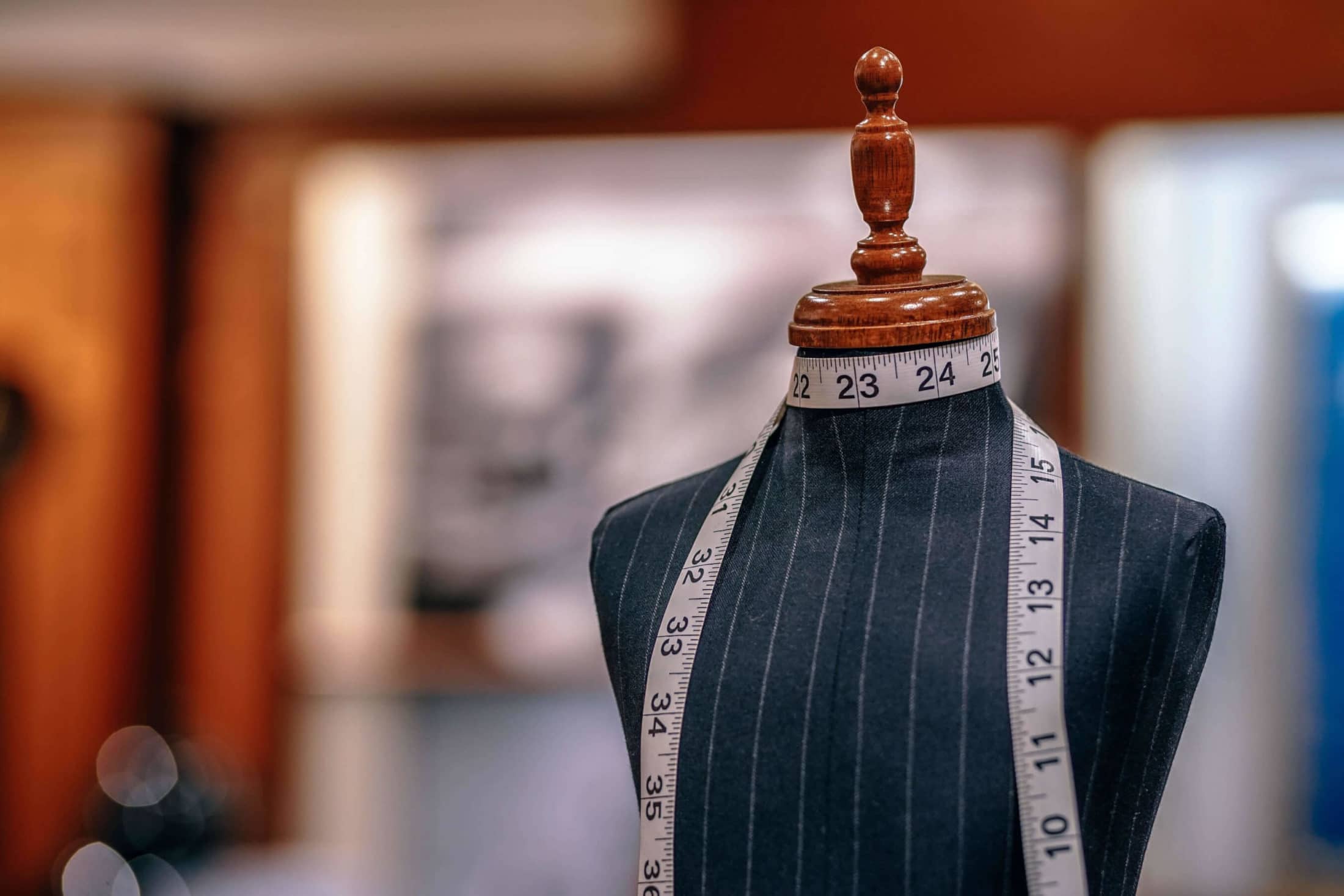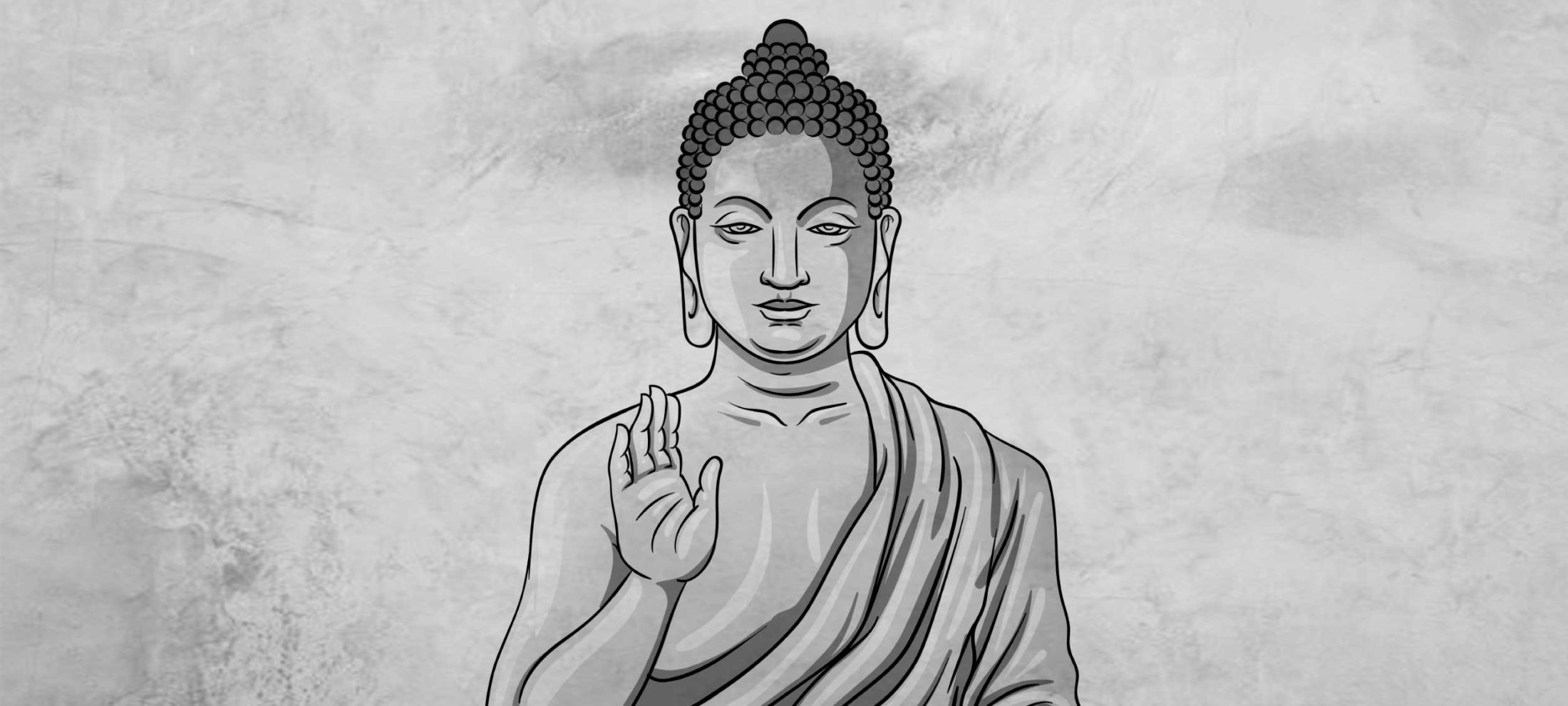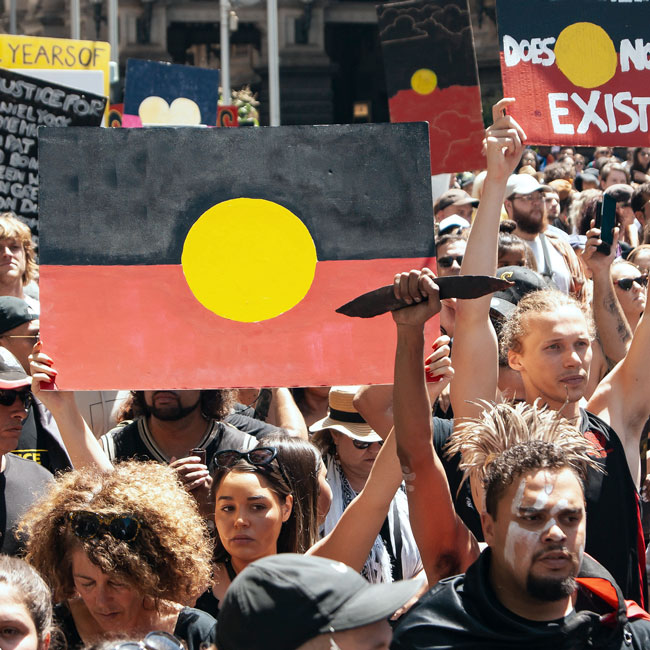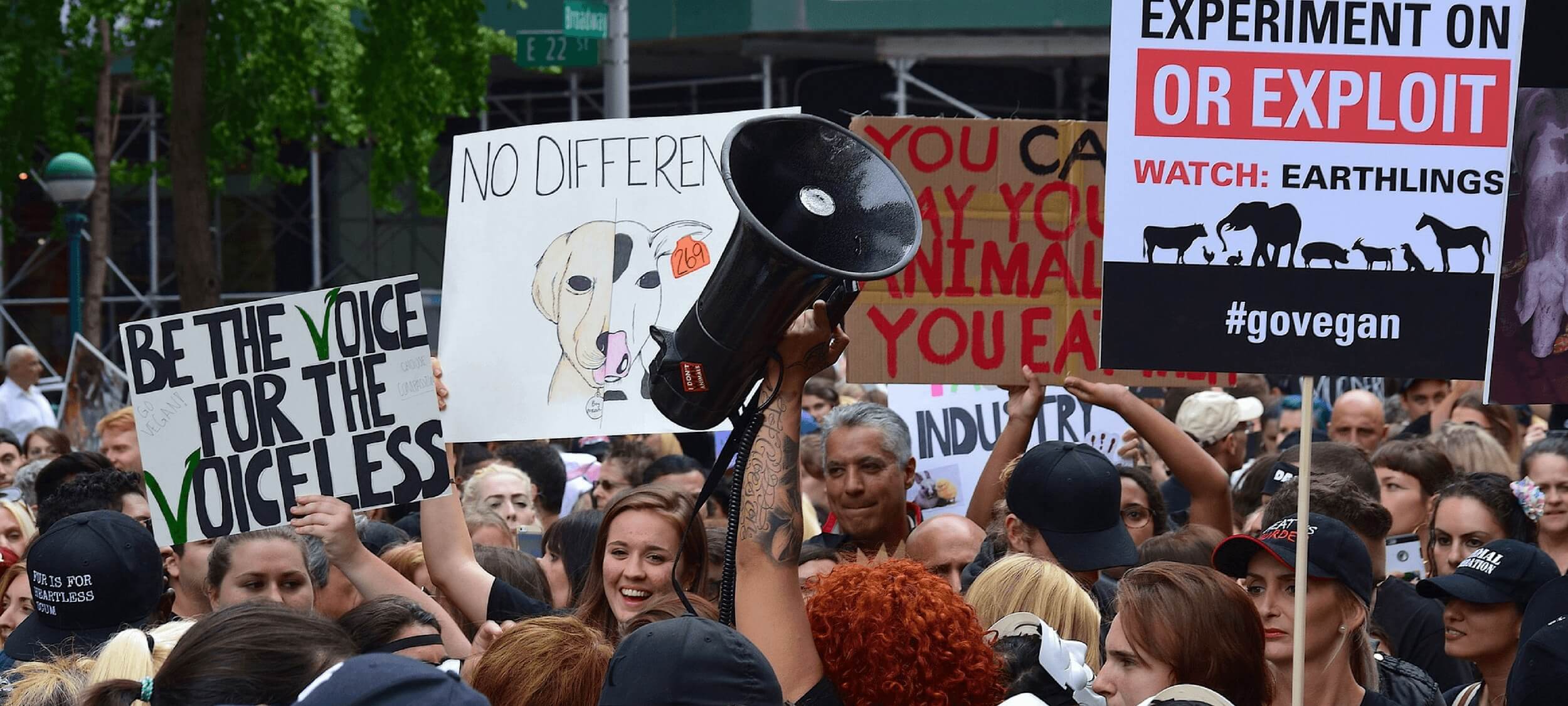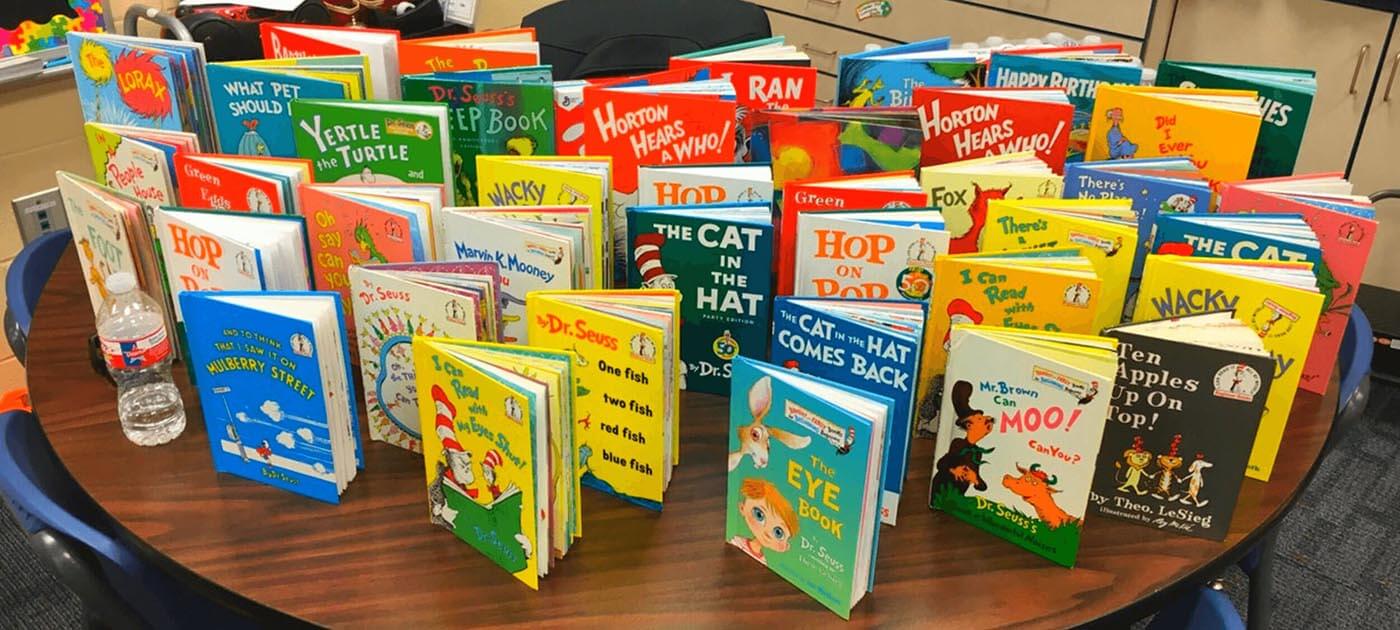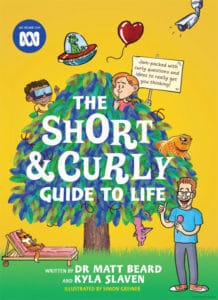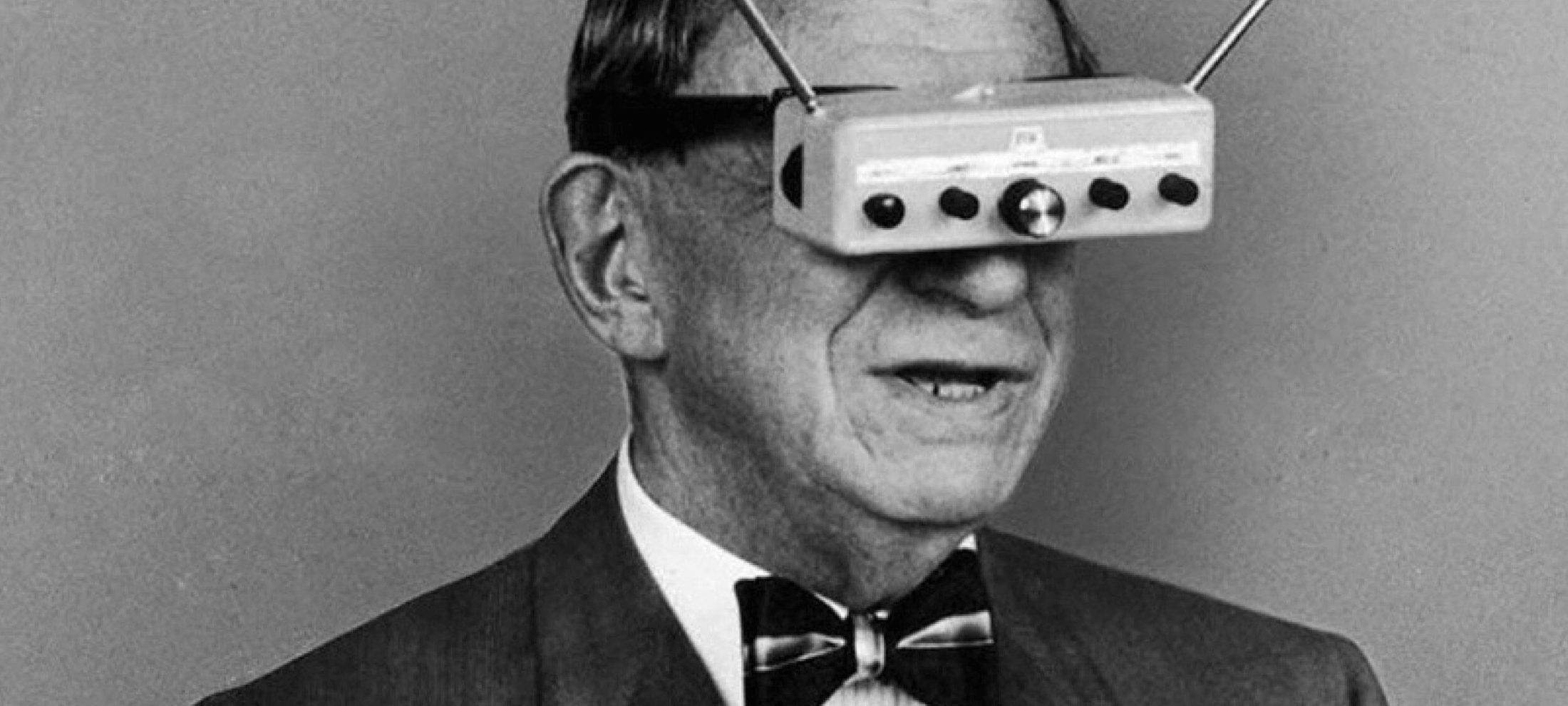Big Thinker: bell hooks
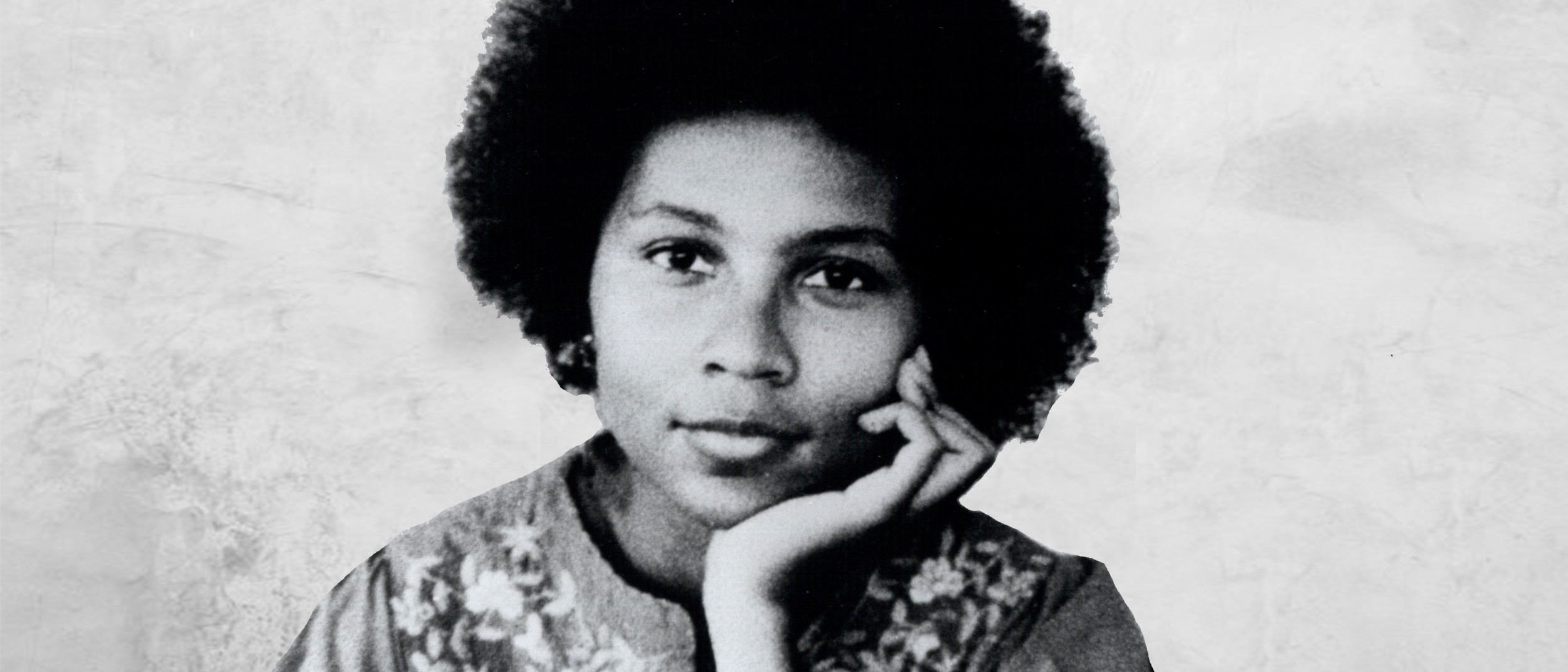
An outspoken professor, author, activist and cultural critic, bell hooks (1952-2021) drew attention to how feminism privileges white women’s struggles, while advocating for a more holistic way of understanding oppression.
Born Gloria Jean Watkins, bell hooks was a child who spoke back. Growing up in a segregated community of the south-central US state Kentucky, she fought against the ways in which her family and society sought to relegate her into a docile, black female identity. This refusal to be complicit in perpetuating her own oppression would define her life and career as a leader in black feminist thought.
It was when she first spoke back in public that she initially identified with her self-claimed moniker. An adult had dismissed her with a comparison to Bell Hooks, her maternal grandmother, in whose bold tongue and defiant attitude she found inspiration. She decapitalised the initials in order for others to focus on the substance of her ideas, rather than herself as a person.
hooks would become a prolific author and commentator. With notable titles including Talking Back, Ain’t I a Woman? and From Margin to Centre, her work scrutinises and challenges the ways in which media, culture and society uphold dominant oppressive structures.
Interlocking oppressions
A popular version of second wave feminism posited that all systems of oppression stemmed from patriarchy. This, hooks rejected. Instead, she introduced the idea that different types of oppression are interlocking and power is relational depending upon where you’re located on the matrix of class, sex, race and gender – which is not unlike the ideas underpinning the currently popular intersectional feminism.
hooks invented the term ‘imperialist white supremacist capitalist patriarchy’ to emphasise the multidimensionality of these power relations. She continues to use it today.
At the time, hooks’ paradigm was considered radical in that it undermined the notion there was a fundamentally common female experience. Many assumed this was vital for feminist solidarity to be forged and political unity maintained. Sisterhood was more complicated than that, hooks said – and to deny the uniqueness of each woman’s status and circumstance was another form of oppression.
Bold and to the point
While coming from academia, hooks strives to make her ideas easily accessible to a broad audience. Her writing style is free of jargon and often humorous, and she regularly appears in documentaries, open venues and television talk shows.
hooks is also renowned for focusing a sharp critical lens on popular culture, showing a strong opposition to political correctness. She’s criticised Spike Lee’s films, media coverage of the OJ Simpson trial and the lauded basketball documentary Hoop Dreams.
She also hasn’t held back her thoughts on prominent feminists.
hooks criticised Madonna for repudiating feminist principles by chasing stardom, and fetishising black culture in her film clips and live shows while reinforcing stereotypes of black men as violent primitives in a 1996 interview.
Twenty years later, she called the pop queen of lady power Beyoncé an ‘anti-feminist terrorist’, citing concern over the influence sexualised images of her have on young girls.
hooks also expressed disappointment Michelle Obama positioned herself as the nation’s ‘chief mum’, saying that by effacing her identity as an Ivy League educated lawyer, she was appeasing white hatred.
Oppositional gaze
Laura Mulvey introduced the theory of the ‘male gaze’ in the ’70s. It explains how images – particularly Hollywood mainstream images – are created to reproduce dominant male heteronormative ways of looking. hooks, who was fascinated with film as the most ‘efficient’ ideological propaganda tool, coined an associated term on black spectatorship: the ‘oppositional gaze’.
Looking has always been a political act, hooks argued. For subordinates in relations of power, looks can be “confrontational, gestures of resistance” which challenge authority. Had a black slave looked directly at a white person of status, they risked severe punishment – even death. Yet “attempts to repress our/black people’s right to gaze had produced in us an overwhelming longing to look, a rebellious desire, an oppositional gaze,” writes hooks.
“By courageously looking, we defiantly declared: ‘Not only will I stare. I want my look to change reality.’”
Black spectatorship of early Hollywood cinema was processed through this oppositional gaze. It was abundantly clear to these viewers, hooks writes, that film reproduced white supremacy. They saw nothing of themselves reflected in this white-washed fantasy realm. Black independent cinema emerged as an expression of resistance.
At the same time, hooks saw television and film as a site where black viewers were able to subject white representations to an interrogative gaze. Carried out in the privacy of the home or in a darkened cinema, this action also carried no risk of reprisal. That black men could look at white female bodies without fear was hugely significant – it was only 1955 when 14-year-old African American Emmett Till was lynched after being accused of offending a white woman in a Mississippi grocery store.
But while black male spectators “could enter an imaginative space of phallocentric power,” the experience of the black female spectator was vastly different, hooks writes. In both white and black productions, the male gaze still overdetermined screen images of women, and frequently idolised white female stars as the supreme objects of desire.
This continued the “violent erasure of black womanhood” in screen culture, making identification with any of the depicted subjects disenabling. While this denied black women the typical joys of watching, the fact that they “looked from a location that disrupted” meant that they could become “enlightened witnesses” through critical spectatorship.
Modern feminism in crisis
Despite the advances of women in the workplace, hooks nonetheless sees today’s feminism in a state of crisis. Firstly, she believes that we still haven’t addressed egalitarianism in the home, leaving women belittled and frustrated in heteronormative relationships.
She also believes that feminism today has lost its radical potential, in that it has converged too closely with radical individualism. Feminism does not mean that as a woman “you can do whatever you want, that you can have it all”, she says. Instead, if you’re to live inside a feminist framework, you need to undertake specific everyday actions. For this reason, hooks believes there are very few true living feminists.
Still, she remains a firm advocate of feminist politics, saying “My militant commitment to feminism remains strong…”
…and the main reason is that feminism has been the contemporary social movement that has most embraced self-interrogation. When we, women of color, began to tell white women that females were not a homogenous group, that we had to face the reality of racial difference, many white women stepped up to the plate. I’m a feminist in solidarity with white women today for that reason, because I saw these women grow in their willingness to open their minds and change the whole direction of feminist thought, writing and action.
This continues to be one of the most remarkable, awesome aspects of the contemporary feminist movement. The left has not done this, radical black men have not done this, where someone comes in and says, “Look, what you’re pushing, the ideology, is all messed up. You’ve got to shift your perspective.” Feminism made that paradigm shift, though not without hostility, not without some women feeling we were forcing race on them. This change still amazes me.
Ethics in your inbox.
Get the latest inspiration, intelligence, events & more.
By signing up you agree to our privacy policy
You might be interested in…
Opinion + Analysis
Health + Wellbeing, Relationships
You are more than your job
Opinion + Analysis
Relationships
Do we have to choose between being a good parent and good at our job?
Opinion + Analysis
Health + Wellbeing, Relationships
Banning euthanasia is an attack on human dignity
Big thinker
Relationships
Big Thinker: Buddha
BY Kate Prendergast
Kate Prendergast is a writer, reviewer and artist based in Sydney. She's worked at the Festival of Dangerous Ideas, Broad Encounters and Giramondo Publishing. She's not terrible at marketing, but it makes her think of a famous bit by standup legend Bill Hicks.
BY The Ethics Centre
The Ethics Centre is a not-for-profit organisation developing innovative programs, services and experiences, designed to bring ethics to the centre of professional and personal life.
Banking royal commission: The world of loopholes has ended

Banking royal commission: The world of loopholes has ended
Opinion + AnalysisBusiness + LeadershipSociety + Culture
BY Simon Longstaff 6 FEB 2019
Following the release of Commissioner Hayne’s royal commission final report on the banking and financial services sector, our Executive Director shares his take on the findings for the Australian Financial Review.
The Final Report of the Hayne Royal Commission is both unsparing and inspired.
Mr Hayne casts a wide net in his analysis of what went wrong in Australia’s banking and finance industry. However, there is one group on whom he pins ultimate accountability; the boards and senior executives of the entities whom he found to be at fault, “Nothing that is said in this Report should be understood as diminishing that responsibility. Everything that is said in this Report is to be understood in the light of that one undeniable fact …”
That is the unsparing part of the Report.
Kenneth Hayne is inspired in his injunction to all Australian business that it must apply some underlying principles, “These norms of conduct are fundamental precepts. Each is well-established, widely accepted, and easily understood.”
- Obey the law;
- Do not mislead or deceive;
- Act fairly;
- Provide services that are fit for purpose;
- Deliver services with reasonable care and skill; and
- When acting for another, act in the best interests of that other.
A dominant theme in Mr Hayne’s final report is that it is time to eliminate the law’s own exceptions to these principles – a series of ‘loopholes’ – often the product of political convenience – that allow the underlying principles to be violated by those with the wit, means and licence to do so.
There is a subtle quality to Mr Hayne’s arguments on this point. At no time does he suggest that ethical commitments should be elevated above compliance with the law. Indeed, he is clear that he opposes that approach. However, he makes it clear that the Law must conform with ethics – in the form of ‘underlying principle’.
The implications of this for the targets of his harshest criticism – boards and senior executives – are profound. For too long, it has been possible to ease through a loophole and take comfort from the fact that questionable (and profitable) conduct was ‘strictly legal’. That approach has cost us all dearly.
The fact that a loophole was available to be exploited does not mean that it should have been. The capacity to exercise ethical restraint (not to do everything that is possible) was always latent within the ranks of boards and senior management.
To be fair, we should acknowledge that boards and senior management have often exercised that capacity. We will never know (and credit will never be given) for the many cases of good judgement that have prevailed. Unfortunately, in the current environment, a multitude of good decisions counts for little when compared to the relatively few, but emblematic, cases of ethical failure – some of which may also have been unlawful.
Ethical failure occurs when core purposes, values and principles are betrayed. On some occasions this is done in a knowing and deliberate manner. More often, the cause is a failure of culture and governance (both intimately linked) that leads an organisation to ‘sleep walk’ into an ethical ‘death pit’.
Recognising this, Commissioner Hayne recommends that:
All financial services entities should, as often as reasonably possible, take proper steps to:
- Assess the entity’s culture and its governance
- Identify any problems with that culture and governance
- Deal with those problems, and
- Determine whether the changes it has made have been effective
In doing so, Hayne supports and extends the approach already adopted by APRA and ASIC by looking beyond ‘risk culture’ to evaluate the whole.
The Ethics Centre is a pioneer in the development and application of world-class tools for undertaking precisely the kind of evaluation being recommended by Hayne. This approach should not be limited to banking and financial services. It is essential for all organisations – whether in the private or public sectors.
The trouble is that boards and senior managers are often deeply reluctant to look into a well-polished mirror that reveals the truth about their organisation. Instead, they look to those who offer a ‘magic mirror’ that always reflects the comforting myth that you are the ‘fairest of them all’. It takes a certain kind of moral courage to ask for the truth. Perhaps Kenneth Hayne has strengthened the sinews of corporate Australia.
We will see!
Australia was one of the first countries to develop an ethical framework for banking and finance. The Banking + Finance Oath was created in the aftermath of the global financial crisis – at a time when all seemed to be relatively rosy on the domestic front.
The great disappointment was that so few people took up the opportunity to commit to the ‘underlying principles’ on which the BFO is based. Perhaps too many people saw that reality fell too short of the ideal.
If ever there was a time to make something better, it is now. In the wake of the Hayne royal commission, it is time for the ethical majority, working within banking and finance, to step up. Whatever your role or seniority – it’s time to own what is noble in the aims of banking and finance and to give life to its ideals.
Embrace underlying principle, measure and achieve alignment, exercise ethical restraint, regain trust. Do so in the expectation of profit and to earn that most elusive of rewards: a good name.
That is the opportunity that lies latent in the recommendations of the Hayne Report.
Dr Simon Longstaff is executive director of The Ethics Centre
Ethics in your inbox.
Get the latest inspiration, intelligence, events & more.
By signing up you agree to our privacy policy
You might be interested in…
Opinion + Analysis
Health + Wellbeing, Society + Culture
Does your body tell the truth? Apple Cider Vinegar and the warning cry of wellness
Opinion + Analysis
Health + Wellbeing, Business + Leadership
Teachers, moral injury and a cry for fierce compassion
Opinion + Analysis
Business + Leadership
Activist CEO’s. Is it any of your business?
Opinion + Analysis
Business + Leadership, Politics + Human Rights
Should corporate Australia have a voice?
BY Simon Longstaff
Simon Longstaff began his working life on Groote Eylandt in the Northern Territory of Australia. He is proud of his kinship ties to the Anindilyakwa people. After a period studying law in Sydney and teaching in Tasmania, he pursued postgraduate studies as a Member of Magdalene College, Cambridge. In 1991, Simon commenced his work as the first Executive Director of The Ethics Centre. In 2013, he was made an officer of the Order of Australia (AO) for “distinguished service to the community through the promotion of ethical standards in governance and business, to improving corporate responsibility, and to philosophy.” Simon is an Adjunct Professor of the Australian Graduate School of Management at UNSW, a Fellow of CPA Australia, the Royal Society of NSW and the Australian Risk Policy Institute.
Australia Day: Change the date? Change the nation

Australia Day: Change the date? Change the nation
Opinion + AnalysisClimate + EnvironmentPolitics + Human Rights
BY Karen Wyld 24 JAN 2019
Like clockwork, every January Australians question when is, or even if there is, an appropriate time to celebrate the nationhood of Australia.
Each year, a growing number of Australians acknowledge that the 26thof January is not an appropriate date for an inclusive celebration.
There are no sound reasons why the date shouldn’t be changed but there are plenty of reasons why the nation needs to change.
I’ve written about that date before, its origins and forgotten stories and recent almost-comical attempts to protect a public holiday. I choose not to repeat myself, because the date will change.
For many, the jingoism behind Australia Day is representative of a settler colonialism state that should not be preserved. A nation that is not, and has never been fair, free or young. So, I choose to put my energy into changing the nation. And I am not alone.
People are catching up and contributing their voices to the call to change the nation, but this is not a new discussion. On 26 January 1938, on the 150thanniversary of the British invasion of this continent, a group of Aboriginal people in NSW wrote a letter of protest, calling it a Day of Mourning. They asked the government to consider what that day meant to them, the First Peoples, and called for equality and justice.
Since 1938, the 26thof January continues to be commemorated as a Day of Mourning. The date is also known as Survival Day or Invasion Day to many. Whatever people choose to call that day, it is not a date suitable for rejoicing.
It was inconsiderate to have changed the date in 1994 to the 26th January. And, now the insensitivity is well known, it’s selfish not to change the date again. The only reasons I can fathom for opposition to changing the date is white privilege, or perhaps even racism.
These antiquated worldviews of white superiority will continue to haunt Australia until a critical mass has self reflected on power and privilege and whiteness, and acknowledges past and present injustices. I believe we’re almost there – which explains the frantic push back.
A belief in white righteousness quietened the voices of reason and fairness when the first fleet landed on the shores of this continent. And it enabled colonisers and settlers to participate in and/or witness without objection decades of massacres, land and resource theft, rape, cultural genocide and other acts of violence towards First Peoples.
The voice of whiteness is also found in present arguments, like when the violence of settlement is justified by what the British introduced. It is white superiority to insist science, language, religion, law and social structures of an invading force are benevolent gifts.
First Peoples already had functioning, sophisticated social structures, law, spiritual beliefs, science and technology. Combining eons of their own advances in science with long standing trade relations with Muslim neighbours, First Peoples were already on an enviable trajectory.
Tales of white benevolence, whether real or imagined, will not obliterate stories of what was stolen or lost. Social structures implanted by the new arrivals were not beneficial for First Peoples, who were barred from economic participation and denied genuine access to education, health and justice until approximately the 1970s.
Due to systemic racism, power and privilege, and social determinants, these introduced systems of justice, education and health still have entrenched access and equity barriers for Aboriginal and Torres Strait Islander people.
Changing the nation involves settler colonialists being more aware of the history of invasion and brutal settlement, as well as the continuing impact on Aboriginal and Torres Strait Islander peoples. It involves an active commitment to reform, which includes paying the rent.
The frontier wars did not result in victory for settler colonialists, because the fight is not over. The sovereignty of approximately 600 distinctly different cultural/language groups was never ceded. Despite generations of violence and interference from settler colonialists, First Peoples have not been defeated.
“You came here only recently, and you took our land away from us by force. You have almost exterminated our people, but there are enough of us remaining to expose the humbug of your claim, as white Australians, to be a civilised, progressive, kindly and humane nation.”
‘Aborigines Claim Citizen Rights!: A Statement of the Case for the Aborigines Progressive Associations’, The Publicist, 1938, p.3
Having lived on this continent for close to 80,000 years and surviving the violence of colonisation and ongoing injustices of non-Indigenous settlement, the voices of First Peoples cannot be dismissed. The fight for rights is not over.
The date will change. And, although it will take longer, the nation will change. There are enough still standing to lead this change – so all Australians can finally access the freedoms, equality and justice that Australia so proudly espouses.
Karen Wyld is an author, living by the coast in South Australia
MOST POPULAR
ArticleHEALTH + WELLBEING
Maggie Beer: Good food can drive better aged care
ArticleHEALTH + WELLBEING
Parent planning – we should be allowed to choose our children’s sex
Big Thinker: Henry Thoreau
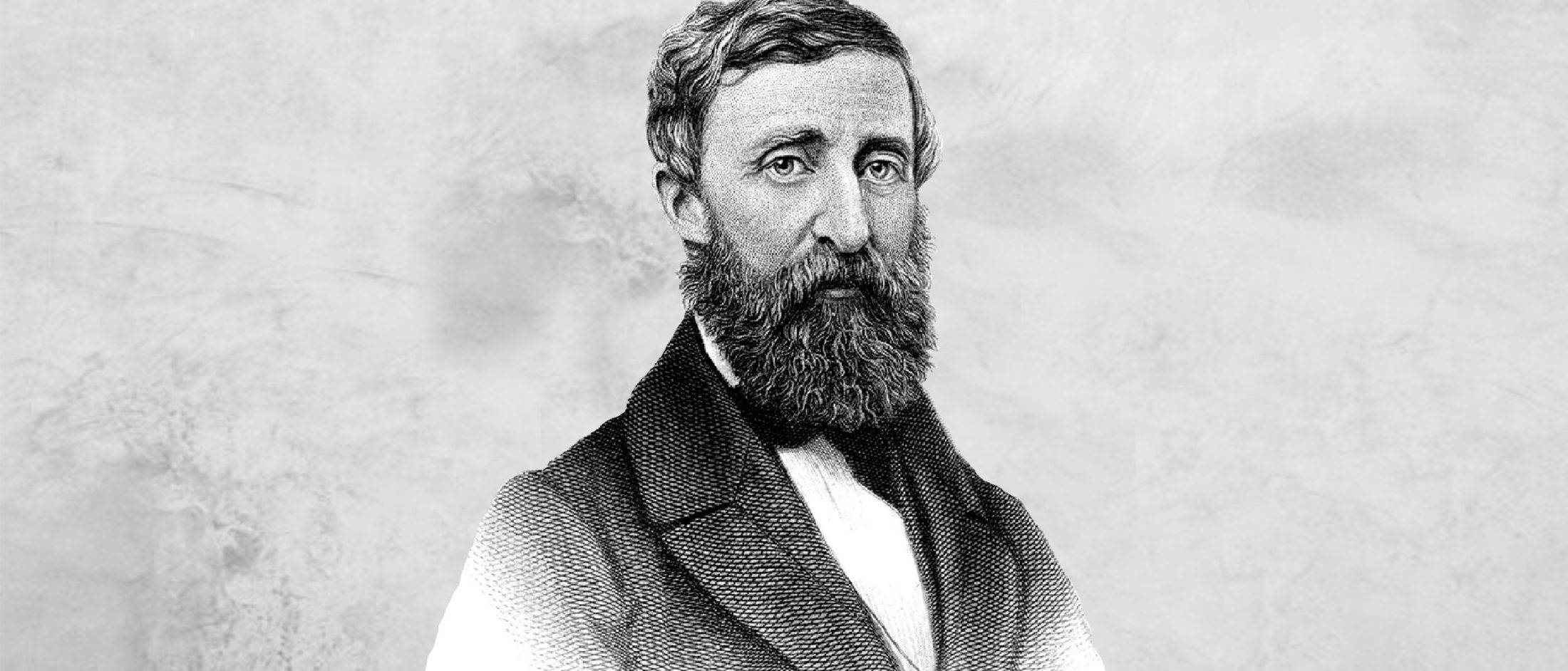
A tax evader, rebel philosopher and the grandfather of environmentalism, Henry Thoreau (1817—1862) practiced a back-to-nature experience of the natural world while opposing authority.
Though enjoying no great acclaim in his lifetime, today the name Henry David Thoreau resonates across philosophy, literature, political history, natural history and environmental science. His spirit of non-conformity, his rugged individualism and his ‘essentialist’ approach to living, have seen him mythologised as an American hero – and an ancestor of various ‘return to nature’ movements, too.
The son of a pencil maker, Thoreau was born in 1817 in Massachusetts, US. He demonstrated free minded dissent for institutions early in life. While at Harvard, he allegedly refused to pay for his diploma certificate. In his subsequent role as teacher, he rejected a recommendation for corporal punishment – by thrashing a random group of students to make a point, then resigning. Later, he would refuse to pay six years’ taxes. He saw it as surrendering his money to fund slavery and the government’s war in Mexico, both of which he vigorously opposed. For this, he was thrown in jail.
Civil Disobedience
Thoreau’s spirit of resistance coalesced in the libertarian manifesto Civil Disobedience. Unjust governments have no right bending citizens to their arbitrary laws and corrupt systems, he argued in the book. A free, enlightened state was only possible once that state “recognised the individual as a higher and independent power”, and enabled them to be “men first, and subject after”.
Rather than meekly obey, Thoreau said he was obliged “to do at any time what I think right” – even if that meant breaking the law. This idea of self-governance by individual conscience would later inspire Gandhi, Martin Luther King and others who took a principled stance against unjust rule.
It has also been widely critiqued. Violent and bigoted acts can, after all, easily be committed under the banner of self-righteousness. And what if two people divided on a matter by ideology or faith can’t settle their differences?
Lines in Civil Disobedience like, “That government is best which governs not at all” also make some question whether Thoreau’s libertarian politics tended towards anarchism.
Simple living, transcendentalism and the Walden experiment
A fellow resident of his home town, Ralph Waldo Emerson was a pivotal influence on Thoreau. He introduced Thoreau to transcendentalism – a movement which reacted against religious and intellectual trends, and enjoined each individual to forge their own “original relation to the universe”. Thoreau became a key figure in the movement. For him, solitude, simplicity, awareness and harmonious engagement with the wild were concrete ways to forge this relation. His philosophy as well as his science, insisted upon embodied understanding, rather than just a contemplative or discursive one.
In a forest cabin lent to him by Emerson, Thoreau conducted an experiment in simple living which would last two years and two months. His methods and reflections during this time became the classic work Walden – named after a pond which abutted the property. In it, with poetic eloquence, didacticism and free wheeling style, he lays out his view of a resigned, frivolous and wretched humanity, and how one is to instead rise above and “live deliberately”.
To achieve an existence which is pure and meaningful, Thoreau argued a life must be cultivated free from illusion and excess. He practiced a style of subsistence living through radical self-denial. Only essential needs were identified and met. A plausible misanthrope, he forswore conversation, sensuality, coffee, meat and alcohol, advising just one meal a day. To relinquish to the slightest temptation was to open the gates to moral disrepair. He even eschewed a doormat, “preferring to wipe my feet on the sod before my door.”
According to the American author John Updike, “Waldenhas become such a totem of the back-to-nature, preservationist, anti-business, civil-disobedience mindset, and Thoreau so vivid a protester, so perfect a crank and hermit saint, that the book risks being as revered and unread as the Bible”.
Kathryn Schulz reads Thoreau’s hermitage as rather a renunciation of responsibility, and categorises it as “original cabin porn”.
“Being forever on the alert”
Shorn of distractions, purged of indulgences, Thoreau believed a greater awareness of the universe can bloom. But more vital to his philosophy was an “ethics of perception” – requiring rigorous attentiveness to the outside world as it was uniquely registered on the senses. This could be observing a sunset’s reflection on glass, or the miniaturised battle of ants. Through this expanded and intensified focus, man was empowered to elevate his life, in “infinite expectation of the dawn”.
A surveyor by trade, Thoreau said we must consciously endeavour to practice “the discipline of looking […] at what is to be seen”.He was suspicious of orthodox forms of knowledge and believed the “essential facts of life” come to us through “the perpetual instilling and drenching of the reality that surrounds us”. Truth, then, was deeply individualised communion between self and world, and the product of intuition and revelation, rather than logic or reason.
Natural as intrinsically valuable
Thoreau’s ideas around nature’s intrinsic value have had significant bearing on modern conservationism. The sublime beauty and order that could be perceived in natural phenomena were not, he thought, qualities projected onto it by humans. They were immanent. What’s more, “Whatever we have perceived to be in the slightest degree beautiful is of infinitely more value to us than what we have only as yet discovered to be useful and to serve our purpose”.
In other words, nature cannot be commodified. Priceless, it must be viewed on its own terms, rather than as a resource to serve human agendas and needs. His view was diametrically opposed to the anthropocentricism that characterised the industrial revolution’s frenzied assault upon lands and oceans, which would culminate in the raft of ecological crises facing us today.
Thoreau also drew attention to the hidden benefits and invisible services of plant and animal species. In one example, he considered the squirrel. To the average American, they were a pest. But if we recognised squirrels in a broader ecosystem context, we could honour them as “planters of forests”, noble little workers whose free labour humans couldn’t do without.
Thoreau recognised, too, that our ignorance of these hidden benefits makes us careless. Trampling over nature’s bounty, upending its fragile balance, we are liable to do untold damage – for which we may ourselves pay a dear cost. In this sense, he was prescient.
“I should be glad if all the meadows on the earth were left in a wild state,” he wrote, “if that were the consequence of men’s beginning to redeem themselves.”
Ethics in your inbox.
Get the latest inspiration, intelligence, events & more.
By signing up you agree to our privacy policy
You might be interested in…
Opinion + Analysis
Climate + Environment, Health + Wellbeing
How should vegans live?
Explainer
Climate + Environment
Thought Experiment: The Last Man on Earth
Opinion + Analysis
Climate + Environment, Relationships
You can’t save the planet. But Dr. Seuss and your kids can.
WATCH
Business + Leadership, Climate + Environment, Science + Technology
How to build good technology
BY Kate Prendergast
Kate Prendergast is a writer, reviewer and artist based in Sydney. She's worked at the Festival of Dangerous Ideas, Broad Encounters and Giramondo Publishing. She's not terrible at marketing, but it makes her think of a famous bit by standup legend Bill Hicks.
Is it time to curb immigration in Australia?

Is it time to curb immigration in Australia?
Opinion + AnalysisClimate + EnvironmentPolitics + Human Rights
BY The Ethics Centre 24 JAN 2019
To curb or not to curb immigration? It’s one of the more polarising questions Australia grapples with amid anxieties over a growing population and its impact on the infrastructure of cities.
Over the past decade, Australia’s population has grown by 2.5 million people. Just last year, it increased by almost 400,000, and the majority – about 61 percent net growth – were immigrants.
Different studies reveal vastly different attitudes.
While Australians have become progressively more concerned about a growing population, they still see the benefits of immigration, according to two different surveys.
Times are changing
In a new survey recently conducted by the Australian National University, only 30 percent of Australians – compared to 45 percent in 2010 – are in favour of population growth.
The 15 percent drop over the past decade is credited to concerns about congested and overcrowded cities, and an expensive and out-of-reach housing market.
Nearly 90 percent believed population growth should be parked because of the high price of housing, and 85 percent believed cities were far too congested and overcrowded. Pressure on the natural environment was also a concern.
But a Scanlon Foundation survey has revealed that despite alarm over population growth, the majority of Australians still appreciate the benefits of immigration.
In support of immigration
In the Mapping Social Cohesion survey from 2018, 80 percent believed “immigrants are generally good for Australia’s economy”.
Similarly, 82 percent of Australians saw immigration as beneficial to “bringing new ideas and cultures”.
The Centre for Independent Studies’ own polling has shown Australians who responded supported curbing immigration, at least until “key infrastructure has caught up”.
In polling by the Lowy Institute last year, 54 percent of respondents had anti-immigration sentiments. The result reflected a 14 percent rise compared to the previous year.
Respondents believed the “total number of migrants coming to Australia each year” was too high, and there were concerns over how immigration could be affecting Australia’s national identity.
While 54 percent believed “Australia’s openness to people from all over the world is essential to who we are as a nation”, trailing behind at 41 percent, Australians said “if [the nation is] too open to people from all over the world, we risk losing our identity as a nation”.
Next steps?
The question that remains is what will Australia do about it?
The Coalition government under Scott Morrison recently proposed to cap immigration to 190,000 immigrants per year. Whether such a proposition is the right course of action, and will placate anxieties over population growth, remains to be seen.
Join us
We’ll be debating IQ2: Immigration on March 26th at Sydney Town Hall, for the full line-up and ticket info click here.
MOST POPULAR
ArticleHEALTH + WELLBEING
Maggie Beer: Good food can drive better aged care
ArticleHEALTH + WELLBEING
Parent planning – we should be allowed to choose our children’s sex
BY The Ethics Centre
The Ethics Centre is a not-for-profit organisation developing innovative programs, services and experiences, designed to bring ethics to the centre of professional and personal life.
Ethics Explainer: Aesthetics

Aesthetics is the philosophical study of art. If you think about what is enjoyable, or valuable about artworks, and why art is important, then you are considering issues to do with aesthetics.
The study of aesthetics is tricky because there are so many different kinds of artworks and it is difficult to think about what they have in common or how they should be categorised or judged. A seminal question in the field of aesthetics is ‘what is art?’ – how ought art be defined? And this question alone has various answers depending on which theory is being applied.
Art defined.
Art includes sculpture, painting, plays, films, novels, dance and music. And it isn’t always clear what the category of art excludes – in large part because artists are always pushing boundaries. The creative nature of art sees works or objects being considered as ‘Art’ that provoke shock, outrage, censorship or exclamations of ‘That’s not Art!’.
Just think about the first time Marcel Duchamp tried to display an artwork called ‘Fountain’ in 1917. The urinal, a ‘found object’ was signed by the artist ‘R. Mutt, 1917’, and caused a riot of disagreement as to whether art must be created or made with one’s own hands or whether it can be intentionally chosen and displayed.
Is it the creation or the reception of the artwork that matters the most?
Who decides whether something is a work of art? Is it ‘the artworld’ of experts and critics? Is it the artist? Or is it the viewer? Many viewers may not understand what they are seeing or may not truly appreciate the skill involved in creating a particular artwork.
For instance, the first time one looks at a Rothko painting, which may appear as a blank canvas painted with a couple of coloured squares, a viewer may think, ‘I could have painted that!’ It is only with an understanding of Rothko’s technique that one may start to appreciate the effort he put in to create it.
And even if we appreciate the skill and effort an artist exerts, we may or may not feel any particular ‘aesthetic experience’ when looking at a piece of abstract or contemporary art, while watching an opera, or while reading a novel by Dostoevsky.
An individual perspective
One’s experience of art is subjective as individual tastes differ. And yet, if we are to claim that some artworks are better than others, or explain why some artworks stand the test of time and are valued by generations, we need to refer to some standards by which to judge them. Are there any features artworks must have to be considered as art? Should artworks be beautiful? Do they need to be moral? And who decides whether or not they meet this criteria?
Despite the historical interference by political and religious leaders who worry about the influence art may have in a society, debates as to what constitutes good art, aesthetically and even morally, has been a matter for debate for aestheticians.
Sometimes it takes time for something to be considered art, let alone to be considered aesthetically valuable. Think about Banksy’s graffiti art. It has been the case that unsuspecting council workers have removed graffiti from the side of a building only to later discover they have inadvertently eliminated a valuable artwork. And yet, not all graffiti is considered art or deemed valuable.
In fact, the opposite is true!
What makes Banksy an exception?
View this post on Instagram. "The urge to destroy is also a creative urge" – Picasso
A post shared by Banksy (@banksy) on
Definitions of art have changed over time. Traditional views of art usually cited ‘beauty’ as an important feature of artworks, but that has since altered. Indeed, is one meant to find the displayed urinal ‘beautiful’? An artwork need not be beautiful to be skilfully executed, meaningful and valuable.
The value of art in society
The defenders of art and its unique role in society usually claim art should be valued for its own sake. Aesthetic value is not to be valued instrumentally, for its financial value or for its status, or even for what we can learn from it or because it is deemed morally ‘good’. It may do any and/or all of these things, or none! Art is valuable because it affords an aesthetic experience.
In its creation and reception, as a form of self expression, imaginative engagement, cognitive as well as affective experience, source of individual and social reflection and contemplation, art has always been central to human life. If it is true that the arts capture and express something unique, and aesthetic experience is intrinsically valuable, then we should consider the place for the arts in society and support and value artists for the important contribution they make.
Dr Laura D’Olimpio is a senior lecturer in philosophy of education at the University of Birmingham, UK.
MOST POPULAR
ArticleHEALTH + WELLBEING
Maggie Beer: Good food can drive better aged care
ArticleHEALTH + WELLBEING
Parent planning – we should be allowed to choose our children’s sex
BY Dr Laura D’Olimpio
Dr Laura D’Olimpio is senior lecturer in philosophy of education at the University of Birmingham, UK, and co-edits the Journal of Philosophy in Schools.
BY ethics
Limiting immigration into Australia is doomed to fail

Limiting immigration into Australia is doomed to fail
Opinion + AnalysisClimate + EnvironmentPolitics + Human Rights
BY Gordon Young 17 JAN 2019
Few topics bridge the ever widening divide between both sides of politics quite like the need to manage population growth.
Whether it’s immigration or environmental sustainability, fiscal responsibility or social justice. That the global population breached 7.5 billion in 2017 has everyone concerned.
We are at the point where the sheer volume of people will start to put every system we rely on under very serious stress.
This is the key idea motivating the centrist political party Sustainable Australia. Led by William Bourke and joined by Dick Smith, the party advocates for a non-discriminatory annual immigration cap at 70,000 persons, down from the current figure of around 200,000 – aimed at a “better, not bigger” Australia.
Join the first IQ2 debate for 2019, “Curb Immigration”. Sydney Town Hall, 26 March. Tickets here.
While the party has been accused of xenophobic bigotry for this stance, their policy makes clear they are not concerned about an immigrant’s religion, culture, or race. Their concern is exclusively for the stress greater numbers of migrants will place on Australia’s infrastructure and environment.
It is a compelling argument. After all, what is the point of the state if not to protect the interests of its citizens?
A Looming Problem
We should be concerned with the needs and interests of our international neighbours, but such concerns must surely be strictly secondary to our own. When our nearest neighbour has approximately ten times our population, squeezed into a landmass twenty five per cent Australia’s size, and ranks 113 places behind us in the Human Development Index, one can be forgiven for believing that limited immigration is critical for ongoing Australian quality of life.
This stance is further bolstered by the highly isolated, and therefore vulnerable nature of Australia’s ecosystem. Australia has the fourth highest level of animal species extinction in the world, with 106 listed as Critically Endangered and significantly more as Endangered or Under Threat.
Much of this is due to habitat loss from human encroachment as suburbs and agricultural lands expand for our increasing needs. The introduction of foreign flora and fauna can be absolutely devastating to these species, greatly facilitated by increased movement between neighbour nations (hence the virtually unparalleled ferocity of our quarantine standards).
While the nation may be a considerable exporter of foodstuffs, many argue Australia is already well over its carrying capacity. Any additional production will be degrading the land and our ability to continue growing food into the future.
The combination of ecological threats and socio-economic pressure makes the argument for limiting immigration to sustainable numbers a powerful one.
But it is absolutely doomed to failure.
Fortress Australia
If the objective of limiting immigration to Australia is both to protect our environment and maintain high quality of life, “Fortress Australia” will fail on both fronts. Why?
Because it does nothing to address the fundamental problem at hand. Unsustainable population growth in a world of limited resources.
Immigration controls may indeed protect both the Australian quality of life and its environment for a time, but without effective strategic intervention, the population burden in neighbouring countries will only continue to grow.
As conditions worsen and resources dwindle, exacerbated by the impacts of anthropogenic climate change, citizens of those overpopulated nations will seek an alternative. What could be more appealing than the enormous, low-density nation with incredibly high quality of life, right next door to them?
If a mere 10 percent of Indonesians (the vast majority of which live on the coast and are exceptionally vulnerable to climate change impacts) decided to attempt the crossing to Australia, we would be confronted by a flotilla equivalent to our entire national population.
The Dilemma
At this point we have one of two choices: suffer through the impact of over a decade’s worth of immigration in one go or commit military action against twenty-five million human beings. Such a choice is a Utilitarian nightmare, an impossible choice between terrible options, with the best possible result still involving massive and sustained suffering for all involved. While ethics can provide us with the tools to make such apocalyptic decisions, the best response by far is to prevent such choices from emerging at all.
Population growth is a real and tangible threat to the quality of life for all human beings on the planet, and like all great strategic threats, can only be solved by proactively engaging in its entirety – not just its symptoms.
Significant progress has been made thus far through programs that promote contraception and female reproductive rights. There is a strong correlation between nations with lower income inequality and population growth, indicating that economic equity can also contribute towards the stabilisation of population growth. This is illustrated by the decreasing fertility rates in most developed nations like Australia, the UK and particularly Japan.
Cause and Effect
The addressing of aggravating factors such as climate change – a problem overwhelmingly caused by developed nations such as Australia, both historically and currently through our export of brown coal– and continued good-faith collaboration with these developing nations to establish renewable energy production, will greatly assist to prevent a crisis occurring.
When concepts such as immigration limitations seek to protect our nation by addressing the symptoms, we are better served by asking how the problem can be solved from its root.
Gordon Young is an ethicist, principal of Ethilogical Consulting and lecturer in professional ethics at RMIT University’s School of Design.
MOST POPULAR
ArticleHEALTH + WELLBEING
Maggie Beer: Good food can drive better aged care
ArticleHEALTH + WELLBEING
Parent planning – we should be allowed to choose our children’s sex
BY Gordon Young
Gordon Young is a lecturer on professional ethics at RMIT University and principal at Ethilogical Consulting.
Adoption without parental consent: kidnapping or putting children first?
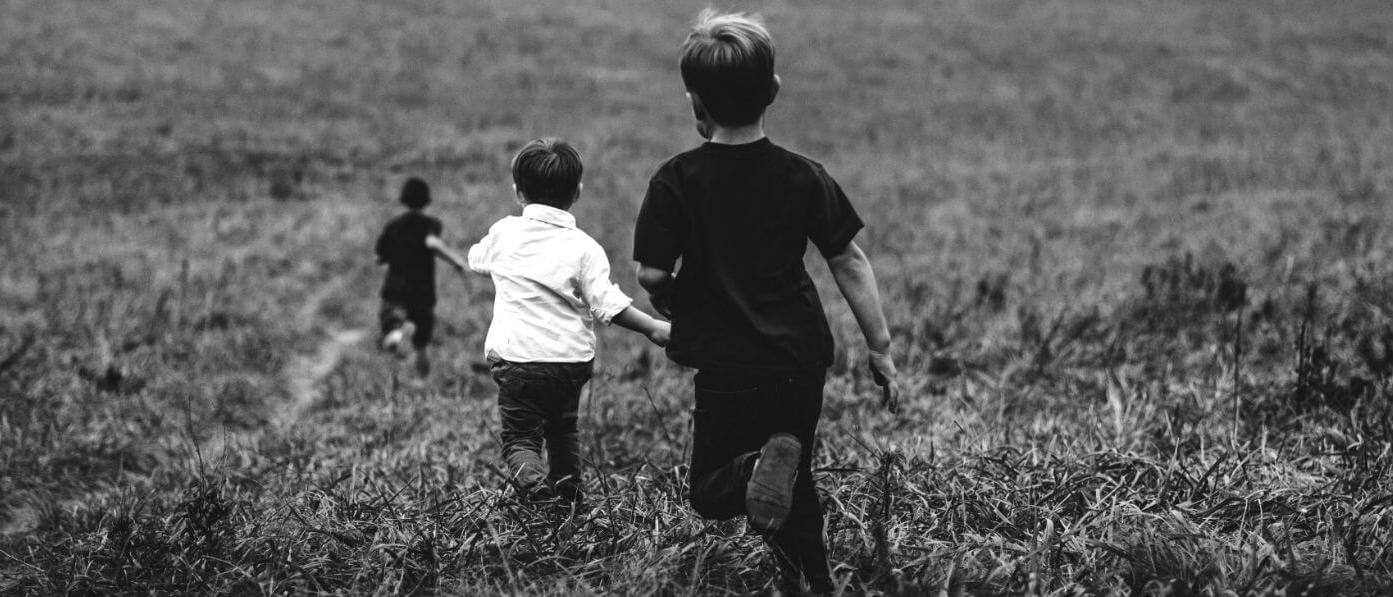
Adoption without parental consent: kidnapping or putting children first?
Opinion + AnalysisPolitics + Human RightsRelationships
BY Oliver Jacques 15 JAN 2019
Adoption without parental consent: kidnapping or putting children first?
Australia’s two biggest states are moving in opposite directions when it comes to adoption. While New South Wales is accused of tearing families apart, is Victoria right to deny children a voice?
A new stolen generation is coming to you soon.
Or so you would think if you read the reaction to recent NSW reforms aimed at making adoption easier.
NSW Parliament has passed new laws placing a two year time limit on a child staying in foster care. After this time, the state can pursue adoption if a child can’t safely return home, even if birth parents don’t agree.
Critical articles across media raised the spectre of another stolen generation.
An open letter signed by 60 community groups said the NSW Government was “on a dangerous path to ruining lives and tearing families apart”. Indigenous writer Nayuka Gorrie tweeted, “Adoption without parental consent is kidnapping”.
But should a parent really have the right to block the adoption of the child they neglected?
Laws prohibit journalists from identifying people involved in child protection cases so media coverage rarely includes the views of children, even after they turn 18. The laws exist to protect vulnerable minors, but such voices could add some balance to the debate and explain why NSW is ahead in putting children first.
Foster care crisis
Out-of-home care adoption – where legal parenting rights are transferred from birth parents to foster parents – is extremely rare in Australia. Last year, there were 147 children foster care adoptions. That’s a tiny fraction of the 47,000 Australian children living in out-of-home care.
Previously, kids could be placed in state care simply because they were born to a single mother or an Aboriginal woman.
These days, child protection workers only remove children if their lives are in danger due to repeated abuse or neglect.
While foster care is supposed to be a temporary arrangement, children on average spend 12 years in care, often bouncing from one temporary home to another.
It’s no surprise more than a third of foster children end up homeless soon after leaving care.
Permanent care instead of adoption
While NSW is trying to make adoption easier, Victoria is not. None of the more than 10,000 children in Victorian state care were adopted last year.
Victorian children who can’t return home are placed in ‘permanent care’, where they remain a ward of the state but are housed by the same foster carers until age 18.
Paul McDonald, CEO of Anglicare Victoria, describes permanent care as a “win-win-win” for children, birth parents and foster carers. He argues it provides stability for children without changing their legal status “so dramatically”.
Ignoring children’s voices
Former AFL player Brad Murphy, who grew up in Victorian permanent care, begs to differ. “From a child’s perspective, you don’t always feel secure in permanent care,” he said. “I longed for adoption. I wanted to belong to my foster parents, I wanted the same surname.”
Victoria didn’t allow him to be adopted by his loving foster carers because his birth father wouldn’t provide consent.
Murphy believes the Victoria Government should give children a say. “When I was 3 years old, I was calling my foster carer ‘Mum’, as I do now at age 33. I always knew what I wanted”.
The other problem with denying children an adoption choice is they continue to belong to the state. “Government were making all the decisions in my life. And like everything with government, it’s never done quickly,” Murphy said.
He often missed out on school camps and excursions because bureaucrats didn’t sign off permission.
Brad was placed in foster care at 16 months of age. Soon after, his mother ‘did a runner’ to Western Australia. His father was in jail for most of his childhood.
“I was never going back to my birth parents. If birth parents don’t make any effort to change their ways, why should the child suffer any longer?”
Case for reform
There are other parents, though, who want to change their ways but support is scarce. Housing, counselling and rehab facilities across Australia are lacking for low income families.
Some argue we should devote more resources toward keeping vulnerable families together, rather than promoting adoption reform.
There is no reason why we can’t do both. Help families where change is possible, but give children a choice when it’s not.
Though separating children from birth parents can prove traumatic, so is constant abuse. Some kids are terrified of their parents and want stability and the feeling of belonging with their new family.
In NSW, caseworkers must ask children what they want, if they’re old enough to understand. Prospective adoptive parents must educate kids about their history and culture. Birth parents can remain connected to children when it’s safe and in the child’s interests.
Overseas studies show adopted children have better life outcomes than those who remain in long term foster care.
Adoption won’t work for everyone, but it could benefit many kids.
Those criticising NSW reforms should also ask the Victorian government why it continues to deny children the basic human right to be heard.
Are you facing an ethical dilemma? We can help make things easier. Our Ethi-call service is a free national helpline available to everyone. Operating for over 25 years, and delivered by highly trained counsellors, Ethi-call is the only service of its kind in the world. Book your appointment here.
Oliver Jacques is a freelance journalist and writer.
Ethics in your inbox.
Get the latest inspiration, intelligence, events & more.
By signing up you agree to our privacy policy
You might be interested in…
Big thinker
Politics + Human Rights
Big Thinker: Judith Jarvis Thomson
Big thinker
Relationships, Society + Culture
Five Australian female thinkers who have impacted our world
Opinion + Analysis
Business + Leadership, Politics + Human Rights, Science + Technology
Not too late: regaining control of your data
Explainer
Politics + Human Rights
Thought Experiment: The famous violinist
BY Oliver Jacques
Oliver Jacques is a freelance writer and tutor based in Griffith, NSW. His writing has appeared in the Sydney Morning Herald, The Guardian, ABC, SBS, Daily Telegraph, Herald Sun, Eureaka Street and The Shovel. He has a Masters Degree in Public Policy at ANU; a graduate certificate in journalism at UTS; and has completed courses in copywriting and search engine optimisation at the Australian Writers Centre.
Want your kids to make good decisions? Here’s what they need to learn

Want your kids to make good decisions? Here’s what they need to learn
Opinion + AnalysisHealth + Wellbeing
BY Matthew Beard 12 DEC 2018
Ask just about any parent what they want for their children and they’ll give you roughly the same answers: we want our kids to be happy, healthy and – perhaps most importantly – good.
For many parents, the goal is to raise children who are better than they are, contribute positively to the world around them, challenge cruelty, injustice and ignorance in the world and make a positive difference in other people’s lives.
Basically, what they’re wanting is that their kids grow up to be ethical people. So, if that’s what so many of us want, it’s worth understanding exactly what ethics is and how we might light the ethical spark in the next generation.
Ethics is a branch of philosophy – it asks questions about the nature of goodness, what makes something right and wrong, and what makes life worth living. As a branch of philosophy, it also leaves no stone unturned. It interrogates any and every claim about what’s right, what’s wrong and what’s ‘normal’.
Whenever we make a choice, we change the world in some small way. Before us are a whole bunch of different possible worlds – it’s up to us to decide which one we’ll turn into reality. Ethics helps us make sure we’re choosing the best of those possible worlds, but it takes practice to do it well.
That means if we’re going to help our kids be ethical people, we need to model ethical thinking in our homes and classrooms, on sports fields and video games and wherever kids are making decisions.
But how do we do it? Here are a few tried and true techniques the ABC’s Short & Curly team have used over the last few years.
1. Don’t be afraid to say ‘I don’t know’
It can be scary to say “I don’t know” – especially when we’re having a conversation with kids. As adults, we’re supposed to have all the answers, right? The problem is, sometimes we don’t. And neither do the young people we’re talking to.
The more we pretend we know it all, the more self-conscious others feel about engaging us in a real conversation, or worse – disagreeing with us! Philosophers use discussions and debate as a team activity – we use disagreement and criticism as a way to work together to find out what’s true.
What’s more, our beliefs about how the world works are often conditioned on what we’ve learned or been told is normal. What we know about fairness, honesty or whatever the topic is might not be the final answer – it could be conditioned by norms and beliefs we’ve been conditioned to believe, even if they don’t hold up to close analysis.
2. Be imaginative
Martha Nussbaum, one of the world’s pre-eminent philosophers, says “you can’t really change the heart without telling a story.” We’re narrative creatures – we’ve always used parables, fables, literature and film as ways of understanding the world around us.
Philosophers have tested their ideas through thought experiments and hypotheticals throughout time. They’re super weird, but they make for great road-trip fodder or dinner table debates.
Ethical reflection demands imagination. It requires us to be able to understand experiences we haven’t lived through and to empathise with people who might be radically different to us.
The next time you’re reading a book or watching a movie with your young one, that’s a moment for reflection. Did those characters do the right thing? How do you think that person felt? Would it have been OK if they’d broken that promise?
3. Don’t shut down a question
Some of our favourite one liners are actually really good ways of undermining ethical conversations. “Everybody does it”, “because I said so” and “you’ll understand when you’re older” are good examples. They rely on authority, tradition or experience as ways to cut off what might be a more productive conversation.
Sometimes, there’s not time for an ethical discussion, but rather than shutting it off with a one-liner, make a commitment to talk about it in more detail later, when you’ve got more time to explain yourself.
4. Question your assumptions
Our minds love telling stories – and we hate plot holes. If we don’t have the full story, we’ll often fill in the gaps with assumptions or inferences that don’t capture the full picture. Ethical conversations work best when they start by questioning what we think we know for sure. Are we starting our discussion on a good foundation?
5. Be curious and research
As well as checking our assumptions, ethics requires us to be curious and informed about the world around us. As much as many philosophers would beg to differ, we can’t understand the world from an armchair.
We need to do some research and uncover relevant facts. Bonus – while you’re doing some research together, you might be able to work together to understand the difference between a fact and an opinion, spot dodgy sources or filter out fake news.
6. Listen to and test your emotional responses
Our emotions are an important part of the way we make judgements, but they can sometimes run wild and lead us astray. Just because we find something disgusting, offensive or hurtful, doesn’t make it wrong. And just because we find something pleasant, fun or funny doesn’t mean it’s OK.
Add “yuck” and “yum” to your list of banned arguments – just because something makes you feel squeamish doesn’t make it bad. Listen to your emotions, but get curious about them – they need to be tested like everything else.
One final note: these tips won’t guarantee a kid won’t do the wrong thing sometimes – like all of us. But it will help you have a shared language for communicating, in a meaningful way, why what they did was wrong.
We all make judgements – it’s part of who we are – ethics helps us build the skills and character to ensure we’re making those judgements in ways that are alive to the world around us and the people within it. And like any skill, it’s easier to master if you start young.
The Short & Curly Guide to Life
What makes something good or bad?
Why are things the way they are? How come it’s so hard to work out the right thing to do? The Short & Curly Guide to Life is an imaginative look at some of life’s biggest and trickiest questions. Figuring out what’s right is way more fun than you think!
Short & Curly Guide to Life is on sale at book stores around Australia and via major online retailers. You can also tune into the ABC Radio podcast, Short & Curly, here.
Matt Beard is the resident philosopher on the ABC Podcast Short & Curly, and the author of The Short & Curly Guide to Life (Penguin Random House). Find him on Twitter @matthewtbeard
Ethics in your inbox.
Get the latest inspiration, intelligence, events & more.
By signing up you agree to our privacy policy
You might be interested in…
Opinion + Analysis
Health + Wellbeing, Relationships
How to pick a good friend
Opinion + Analysis
Health + Wellbeing, Relationships, Science + Technology
When do we dumb down smart tech?
Opinion + Analysis
Business + Leadership, Health + Wellbeing
Why ethical leadership needs to be practiced before a crisis
Opinion + Analysis
Health + Wellbeing, Relationships
Academia’s wicked problem
BY Matthew Beard
Matt is a moral philosopher with a background in applied and military ethics. In 2016, Matt won the Australasian Association of Philosophy prize for media engagement. Formerly a fellow at The Ethics Centre, Matt is currently host on ABC’s Short & Curly podcast and the Vincent Fairfax Fellowship Program Director.
Ethics Explainer: Existentialism
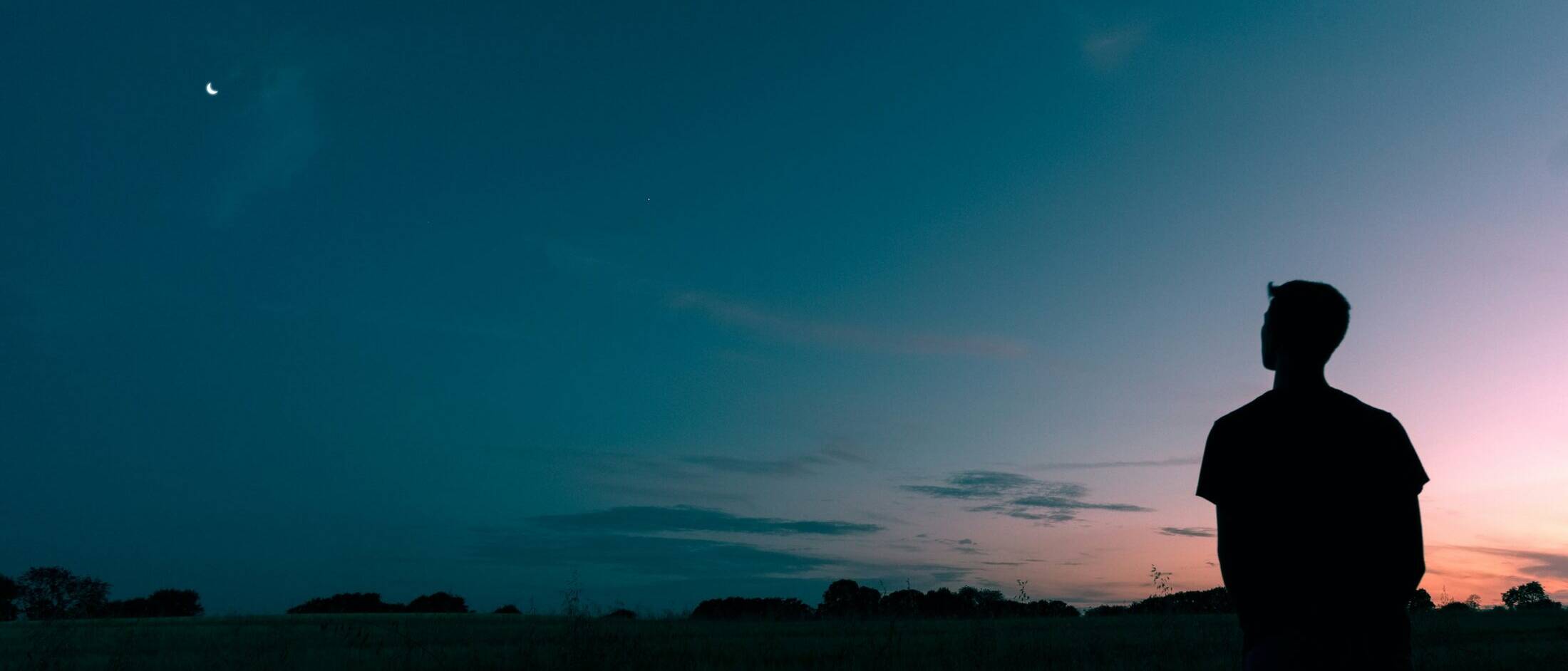
If you’ve ever pondered the meaning of existence or questioned your purpose in life, you’ve partaken in existentialist philosophy.
It would be hard to find someone who hasn’t asked themselves the big questions. What is the meaning of life? What is my purpose? Why do I exist? For thousands of years, these questions were happily answered by the belief your purpose in life was assigned prior to your creation. The existentialists, however, disagreed.
Existentialism is the philosophical belief we are each responsible for creating purpose or meaning in our own lives. Our individual purpose and meaning is not given to us by Gods, governments, teachers or other authorities.
In order to fully understand the thinking that underpins existentialism, we must first explore the idea it contradicts – essentialism.
Essentialism
Essentialism was founded by the Greek philosopher Aristotle who posited everything had an essence, including us. An essence is “a certain set of core properties that are necessary, or essential for a thing to be what it is”. A book’s essence, for example, is its pages. It could have pictures or words or be blank, be paperback or hardcover, tell a fictional story or provide factual information. Without pages though, it would cease to be a book. Aristotle claimed essence was created prior to existence. For people, this means we’re born with a predetermined purpose.
This idea seems to imply, whether you’re aware of it or not, that your purpose in life has been determined prior to your birth. And as you live your life, the decisions you make on a daily basis are contributing to your ultimate purpose, whatever that happens to be.
This was an immensely popular belief for thousands of years and gave considerable weight to religious thought that placed emphasis on an omnipotent God who created each being with a predetermined plan in mind.
If you agreed with this thinking, then you really didn’t have to challenge the meaning of life or search for your purpose. Your God already provided it for you.
Existence precedes essence
While philosophers including Søren Kierkegaard, Fyodor Dostoyevsky and Friedrich Nietzsche questioned essentialism in the 19th century, existentialism was popularised by Jean-Paul Sartre in the mid-20th century following the horrific events of World War II.
As people questioned how something as catastrophically terrible as the Holocaust could have a predetermined purpose, existentialism provided a possible answer that perhaps it is the individual who determines their essence, not an omnipotent being.
The existentialist movement asked, “What if we exist first?”
At the time it was a revolutionary thought. You were created as a blank slate, tabula rasa, and it is up to you to discover your life’s purpose or meaning.
While not necessarily atheist, existentialists believe there is no divine intervention, fate or outside forces actively pushing you in particular directions. Every decision you make is yours. You create your own purpose through your actions.
The burden of too much freedom
This personal responsibility to shape your own life’s meaning carries significant anxiety-inducing weight. Many of us experience the so-called existential crisis where we find ourselves questioning our choices, career, relationships and the point of it all. We have so many options. How do we pick the right ones to create a meaningful and fulfilling life?
“Man is condemned to be free; because once thrown into the world, he is responsible for everything he does” – John-Paul Sartre
Freedom is usually presented positively but Sartre posed that your level of freedom is so great it’s “painful”. To fully comprehend your freedom, you have to accept that only you are responsible for creating or failing to create your personal purpose. Without rules or order to guide you, you have so much choice that freedom is overwhelming.
The absurd
Life can be silly. But this isn’t quite what existentialists mean when they talk about the absurd. They define absurdity as the search for answers in an answerless world. It’s the idea of being born into a meaningless place that then requires you to make meaning.
The absurd posits there is no one truth, no inherent rules or guidelines. This means you have to develop your own moral code to live by. Sartre cautioned looking to authority for guidance and answers because no one has them and there is no one truth.
Living authentically and bad faith
Coined by Sartre, the phrase “living authentically” means to live with the understanding of your responsibility to control your freedom despite the absurd. Any purpose or meaning in your life is created by you.
If you choose to live by someone else’s rules, be that anywhere between religion and the wishes of your parents, then you are refusing to accept the absurd. Sartre named this refusal “bad faith”, as you are choosing to live by someone else’s definition of meaning and purpose – not your own.
So, what’s the meaning of life?
If you’re now thinking like an existentialist, then the answer to this question is both elementary and infinitely complex. You have the answer, you just have to own it.
Ethics in your inbox.
Get the latest inspiration, intelligence, events & more.
By signing up you agree to our privacy policy
You might be interested in…
Opinion + Analysis
Health + Wellbeing, Relationships
Germaine Greer is wrong about trans women and she’s fuelling the patriarchy
Opinion + Analysis
Relationships
Enough with the ancients: it’s time to listen to young people
WATCH
Relationships
Unconscious bias
Opinion + Analysis
Health + Wellbeing, Politics + Human Rights, Relationships
